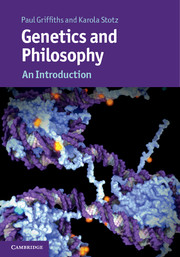4 - The reactive genome
Published online by Cambridge University Press: 05 April 2013
Summary
The particulate gene has shaped thinking in the biological sciences over the past century. But attempts to translate such a complex concept into a discrete physical structure with clearly defined boundaries were always likely to be problematic, and now seem doomed to failure. Instead, the gene has become a flexible entity with borders that are defined by a combination of spatial organization and location, the ability to respond specifically to a particular set of cellular signals, and the relationship between expression patterns and the final phenotypic effect.
(Dillon 2003, 457)Postgenomics
This chapter explores the dramatic changes that have occurred in the understanding of genomes and their components in the ‘postgenomic era’ of molecular biology – the period that followed the publication of the draft human genome sequence in 2001. After outlining some of those changes we go on in 4.2 to examine their implications for the gene. We argue that the molecular conception of the gene introduced in the last chapter has evolved further. A relatively conservative conception of the gene as a structural unit, only slightly more complex than that envisaged by molecular biologists in the 1970s, continues to play a role in research. But this conception no longer fulfills the central role of the molecular gene concept, which is to facilitate the study of how the specificity of biomolecules is related to the informational specificity of DNA sequences. For this, a more flexible conception of the gene is required, as biological commentators have noticed (Gerstein et al. 2007). We refer to this new conception as the ‘postgenomic gene’ (Griffiths and Stotz 2006) and to the more conservative structural conception as the ‘nominal gene’ (Burian 2004).
- Type
- Chapter
- Information
- Genetics and PhilosophyAn Introduction, pp. 66 - 107Publisher: Cambridge University PressPrint publication year: 2013

